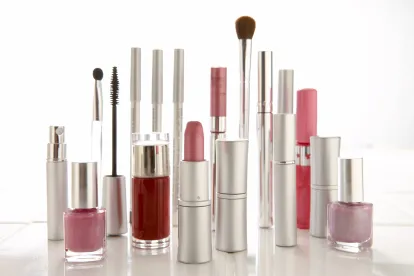On February 18, 2022, a bill was introduced in California that would ban the sale in California of any cosmetics and personal care products that contain any type of PFAS. Concurrently, a similar bill is making its way through the Washington state legislative process, which would also ban the sale of any cosmetics that contain any PFAS whatsoever. The proposed PFAS ban for cosmetics in California and Washington are just the latest in the broad-sweeping PFAS-containing products ban bills that are increasing across the country. It is critical for companies anywhere in the manufacturing or supply chain for cosmetics to immediately assess the impact of the proposed PFAS ban for cosmetics on corporate practices, and make decisions regarding continued use of PFAS in products, as opposed to substituting for other substances. At the same time, companies impacted by the PFAS legislation must be aware that the bills poses risks to the companies involvement in PFAS litigation in both the short and long term.
California’s Proposed PFAS Ban For Cosmetics
Assembly Bill 2771 was introduced in California on February 18, 2022. The substance of the bill is short: “No person or entity shall manufacture, sell, deliver, hold, or offer for sale in commerce any cosmetic product that contains perfluoroalkyl and polyfluoroalkyl substances (PFAS).” The proposed bill defines PFAS to mean the chemical class of fluorinated compounds that has at least one fluorinated carbon atom – in other words, the entirety of the 9,000+ substances in the chemical class. In addition, the proposed bill defines “cosmetic product” as “…any article intended to be applied to the human body for cleansing, beautifying, promoting attractiveness, or altering the appearance.” The bill proposes an effective date of January 1, 2025. The bill will now make its way through the California legislative process.
The proposed PFAS ban for cosmetics is noteworthy because, if passed, it would be the first state to ban all PFAS from personal care products, unless the Washington bill discussed below is passed first. This is not the first time, though, that California has targeted PFAS in cosmetics in its legislative actions. In October 2020, the state previously banned 13 specific PFAS from use in cosmetics sold in the state. Bill 2771 of course looks to ban a larger number of cosmetics products with its “all PFAS” language.
Washington’s Proposed PFAS Ban For Cosmetics
In 2021, Washington state introduced a bill (SB 5703) in its state Senate that sought to ban all PFAS from cosmetics sold in the state. In its intention, the bill mirrors the California bill in that it seeks to ban all types of PFAS from cosmetics products sold within the state. Washington’s definition of “cosmetic products” is more detailed than California’s: “(1) articles intended to be rubbed, poured, sprinkled, or sprayed on, introduced into, or otherwise applied to the human body or any part thereof for cleansing, beautifying, promoting attractiveness, or altering the appearance, and (2) articles intended for use as a component of any such article; except that such term shall not include soap.” Similar to California, the ban would take effect on January 1, 2025.
On February 14, 2022, the Washington Senate passed the bill by a 26-21 vote. The bill now proceeds to the Washington House for committee consideration. If it passes the House, the PFAS ban for cosmetics will become state law in Washington.
Impact of Proposed PFAS Ban On Businesses
While other states have introduced and/or passed legislation banning a small subset of PFAS in cosmetics (Maryland), banned all “intentionally added PFAS” to all consumer products (Maine), or taken steps to introduce legislation to ban PFAS in personal care products (six other states fall in this category), Washington’s bill is the farthest along in the legislative process. California is the largest economy in the country (and one of the largest in the world) and the impact on business will therefore be significant if the California bill passes. While both states provide the cosmetics industry with close to three years to adapt their business practices, the undertaking to do so will nevertheless be time consuming and costly.
It is of the utmost importance for businesses along the whole cosmetics supply chain to evaluate their PFAS risk. Public health and environmental groups urge legislators to regulate these compounds. One major point of contention among members of various industries is whether to regulate PFAS as a class or as individual compounds. While each PFAS compound has a unique chemical makeup and impacts the environment and the human body in different ways, some groups argue PFAS should be regulated together as a class because they interact with each other in the body, thereby resulting in a collective impact. Other groups argue that the individual compounds are too diverse and that regulating them as a class would be over restrictive for some chemicals and not restrictive enough for others.
Companies should remain informed so they do not get caught off guard. States are increasingly passing PFAS product bills that differ in scope. For any manufacturers, especially those who sell goods interstate, it is important to understand how those various standards will impact them, whether PFAS is regulated as individual compounds or as a class. Conducting regular self-audits for possible exposure to PFAS risk and potential regulatory violations can result in long term savings for companies and should be commonplace in their own risk assessment.




 />i
/>i

